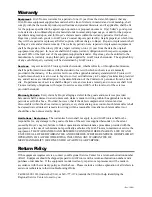
Pub. 42004-178D
Model 263 Isolation Barrier Unit (IBU)
Page: 10 of 13
\\s_eng\gtcproddocs\standard ioms - current release\42004 instr. manuals\42004-178d.doc
03/06
Lightning Protection
Telephone lines are susceptible to lightning strikes and must be properly protected and maintained. On-
premise line protection is usually provided at the building entrance by the responsible telephone company
when it is installed. This protection is often neglected after installation.
Degradation of conventional protection, such as carbon blocks or gas discharge types, will occur with
each lightning strike. To ensure safe operation, protective elements should be replaced frequently and
checked for proper connection and grounding. Gas discharge types are by far the most robust, cost-
effective means of protection.
The registered I.S. equipment meets all isolation and safety requirements of FCC, Part 68, DOC CS-03,
UL 913, and CSA C22.2-No. 157. However, lightning strikes are not predictable or considered to be a
condition of fault likely to occur in practice as defined by the guidelines for intrinsic safety. Therefore, it
is imperative that the user employ and maintain a proper lightning protection scheme. This is true for all
hazardous area equipment and all telecommunications equipment subject to lightning.
Figure 4. Example of a lightning protection design
































